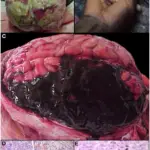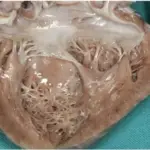The shaken baby syndrome is a serious brain injury resulting from forcefully shaking an infant or toddler.
What is the Pathology of Shaken Baby Syndrome?
The pathology of the shaken baby syndrome is:
-Etiology: The cause of the shaken baby syndrome is when someone shakes a baby or toddler due to frustration or anger, often because the child won’t stop crying.
-Pathogenesis: The sequence of events that lead to the shaken baby syndrome is a baby that’s forcefully shaken, his/her fragile brain moves back and forth inside the skull and this causes bruising, swelling, and bleeding.
-Morphology: The morphology associated with the shaken baby syndrome shows that survivors may develop certain medical conditions, such as partial or total blindness, developmental delays, learning problems, or behavior issues, intellectual disability, seizure disorders, and cerebral palsy.
How does Shaken Baby Syndrome Present?
Patients with the shaken baby syndrome typically are either males or females present at the age range of infants. The symptoms, features, and clinical findings associated with the shaken baby syndrome include breathing problems, extreme fussiness or irritability, poor eating, difficulty staying awake, vomiting, pale or bluish skin, seizures, coma, and paralysis.
How is Shaken Baby Syndrome Diagnosed?
The shaken baby syndrome is diagnosed with various tests that include skeletal survey, eye exam, blood tests, magnetic resonance imaging (MRI), and computerized tomography (CT) scan.
How is Shaken Baby Syndrome Treated?
The shaken baby syndrome is treated with emergency treatment that includes breathing support and surgery to stop bleeding in the brain.
What is the Prognosis of Shaken Baby Syndrome?
The prognosis of shaken baby syndrome is good. It’s preventable and help is available for parents who are at risk of harming a child. Also, parents can educate other caregivers about the dangers of the shaken baby syndrome.



